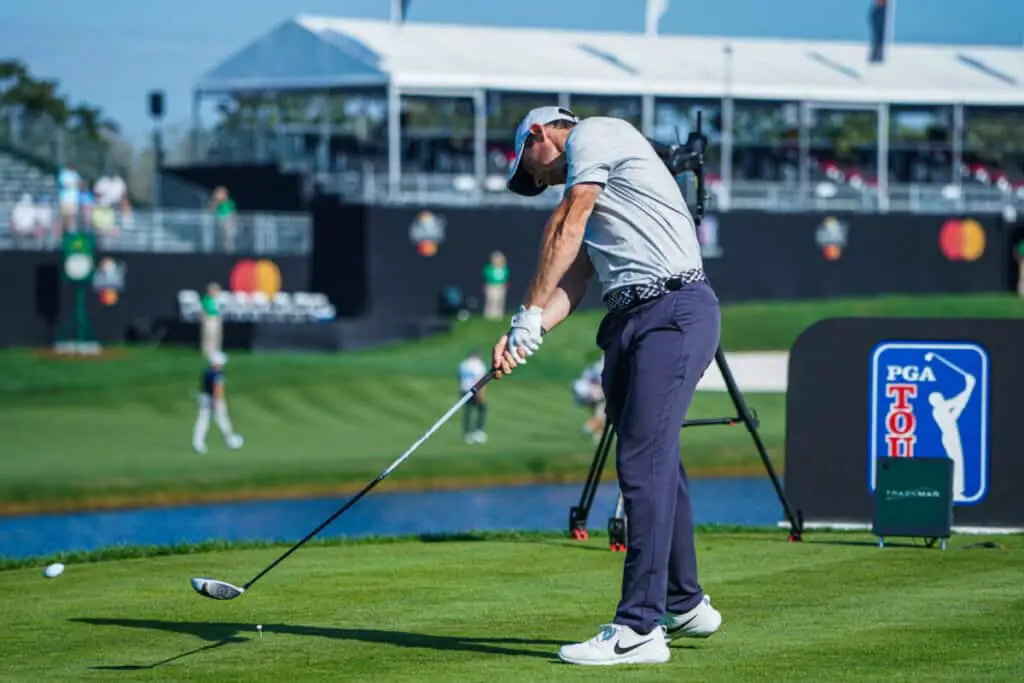How Far Do Average Golfers Hit Each Club

Golf is a game that combines skill, strategy, and precision. One of the most common questions among golfers, whether beginners or experienced players, is how far they can hit each club in their bag. The ability to gauge distances accurately and consistently is crucial for making strategic decisions on the course and ultimately achieving lower scores.
In this comprehensive guide, we will explore the average distances that average golfers typically achieve with each club in their arsenal. Understanding these average distances can provide valuable insights for golfers of all skill levels, helping them make informed decisions and approach their shots with confidence.
The distances that average golfers achieve with each club can vary based on several factors, including swing speed, technique, clubhead design, loft, and individual physical attributes. By exploring these factors and their impact on distance, we can gain a deeper understanding of how average golfers perform with each club in their bag.
Whether you are a beginner looking to gauge your progress or an experienced golfer aiming to optimize your distances, this guide will serve as a valuable resource. So, join us as we dive into the fascinating world of average golf distances and unlock the secrets to better decision-making and improved performance on the golf course.
/DrivingRange-589cd4af3df78c47584c6873.jpg)
Factors Influencing Distance
The distance a golfer can hit each club is influenced by a combination of factors. Understanding these factors can help you assess and improve your own distances. Let’s explore the key factors:
Swing Speed
Swing speed plays a vital role in determining how far a golfer can hit the ball. Generally, the faster the swing speed, the greater the potential for distance. However, it’s important to note that swing speed alone does not guarantee maximum distance. Factors such as swing mechanics, tempo, and timing also play crucial roles in optimizing distance.
Clubhead Design and Loft
The design of the clubhead and the loft of the club significantly impact the distance a golfer can achieve. Modern clubhead designs incorporate technology that promotes higher ball speeds and increased forgiveness. Additionally, the loft of the club affects the launch angle and trajectory, which can influence the overall distance.
Ball Type and Compression
The type of golf ball used and its compression rating can also affect distance. Golf balls come in different constructions and compressions, and selecting the right ball for your swing speed and playing conditions can enhance distance. Higher compression balls tend to be suited for faster swing speeds, while lower compression balls can help maximize distance for slower swing speeds.
Now that we have explored the factors that influence distance, let’s delve into the average distances achieved with each club.
Driver Distance
The driver is typically the club that provides the most distance off the tee. Let’s examine the average driver distances for different categories of golfers:
| Golfer Category | Average Driver Distance |
|---|---|
| Professional | 300+ yards |
| Advanced Amateur | 250-300 yards |
| Intermediate | 200-250 yards |
| Beginner | 150-200 yards |
It’s important to note that these distances are general averages and can vary depending on individual characteristics and skill levels.
Iron Distance
Iron distances can vary greatly based on a golfer’s swing speed, technique, and club selection. Here’s an overview of the average distances for different irons:
| Club | Average Distance (yards) |
|---|---|
| 3-iron | 170-210 |
| 4-iron | 160-200 |
| 5-iron | 150-190 |
| 6-iron | 140-180 |
| 7-iron | 130-170 |
| 8-iron | 120-160 |
| 9-iron | 110-150 |
| Pitching Wedge | 100-140 |
These distances serve as a rough guideline, and individual variations are expected.
Wedge Distance
Wedge distances are crucial for approach shots and shots around the green. Here’s an overview of the typical distances for different wedge types:
| Wedge | Average Distance (yards) |
|---|---|
| Gap Wedge | 90-120 |
| Sand Wedge | 80-110 |
| Lob Wedge | 70-100 |
It’s important to note that wedge distances can vary based on the golfer’s technique and the specific shot requirements.
Putting and Short Game Distance
While putting and short game shots do not involve the same distances as full swings, distance control is still crucial for scoring well. Here are some average distances to consider:
- Putting: On average, golfers aim to roll the ball into the hole with as few strokes as possible. The distance of putts can range from a few feet to several yards, depending on the green’s contours and the golfer’s skill level.
- Chipping and Pitching: Chipping and pitching shots are used around the green to get the ball closer to the hole. The distances for these shots can vary greatly based on the desired trajectory, landing spot, and green conditions. Generally, chipping distances can range from a few yards to around 30 yards, while pitching distances can extend from 30 to 100 yards or more.
It’s important to note that these distances are averages and can vary based on individual skills, technique, and the specific conditions of the course.
Factors Unique to Individual Golfers
Several factors can influence a golfer’s club distances beyond the general averages. These factors include:
Physical Attributes
- Strength: A golfer’s physical strength can impact their ability to generate clubhead speed and, consequently, their distance. Strength training exercises can help improve overall power and distance potential.
- Flexibility: Flexibility plays a crucial role in allowing a golfer to achieve a full range of motion and generate power in their swings. Incorporating flexibility exercises and regular stretching routines can aid in optimizing distances.
Skill Level and Experience
- Swing Mechanics: A golfer’s technique and swing mechanics greatly affect their ability to maximize distance. Proper swing mechanics, including a consistent tempo, sequencing of body movements, and solid ball-striking, can help achieve optimal distances.
- Club Fitting: Getting properly fitted for clubs can make a significant difference in distance. Factors such as shaft length, flex, and clubhead design can affect the golfer’s ability to generate speed and distance with each club.
Remember, individual variations are common, and it’s essential to focus on personal improvement rather than comparing distances to others.
Conclusion
Understanding the average distances that golfers achieve with each club provides valuable insight into the game. Factors such as swing speed, clubhead design, loft, and individual attributes influence these distances. By recognizing these factors and continually working on improving technique and physical fitness, golfers can enhance their club distances and overall performance. However, it’s crucial to remember that consistency, accuracy, and course management are equally important as distance when it comes to scoring well in golf. Embrace your unique journey and enjoy the process of finding your optimal distances on the course.



